User:Harry Princeton/Uniform tilings
Summary
[edit]1-uniform tilings include 3 regular tilings, and 8 semiregular ones, with 2 or more types of regular polygon faces. There are 20 2-uniform tilings. 3-uniform tilings include 22 2-Catalaves tilings and 39 3-Catalaves ones. The 3 regular tilings have regular dual tilings. In general n-isogonal tilings have n-isohedral dual tilings, with 1-to-1 correspondence between vertices of uniform tilings and the planigons of dual uniform tilings.
| m | ||||||||||
|---|---|---|---|---|---|---|---|---|---|---|
| 1 | 2 | 3 | 4 | 5 | 6 | 7 | 14 | 15 | Total | |
| 1 | 11 | 0 | 0 | 0 | 0 | 0 | 0 | 0 | 0 | 11 |
| 2 | 0 | 20 | 0 | 0 | 0 | 0 | 0 | 0 | 0 | 22 |
| 3 | 0 | 22 | 39 | 0 | 0 | 0 | 0 | 0 | 0 | 61 |
| 4 | 0 | 33 | 85 | 33 | 0 | 0 | 0 | 0 | 0 | 151 |
| 5 | 0 | 74 | 149 | 94 | 15 | 0 | 0 | 0 | 0 | 332 |
| 6 | 0 | 100 | 284 | 187 | 92 | 10 | 0 | 0 | 0 | 673 |
| 7 | ? | ? | ? | ? | ? | ? | 7 | 0 | 0 | a lot |
| 14 | ? | ? | ? | ? | ? | ? | ? | 0 | 0 | ∞ |
| 15 | 0 | 0 | 0 | 0 | 0 | 0 | 0 | 0 | 0 | 0 |
For example, these are two 14-Catalaves tilings, one with 92 uniformity (mine), and the other with 174 uniformity[1]:
| O34S12T6EI2Rr11D14F3s2C9B23H3 | O438S8T4EI2Rr13D12F2s2C88B19H10[1] |
|---|---|

|

|
Dual Polygonal Faces (Coregular Polygons or Vertex Regular Planigons)
[edit]OSTEIRrDFsCBHi (fifteen VRPs)
[edit]There are 15 vertex regular planigons (VRPs) in dual uniform tilings, 14 of which can be present in dual uniform tilings:
- Isosceles obtuse triangle (V3.122): O.
- 30-60-90 right triangle (V4.6.12): 3.
- Skew quadrilateral (V32.4.12): S.
- Tie kite (V3.4.3.12): T.
- Equilateral triangle (V63): E.
- Isosceles trapezoid (V32.62): I.
- Rhombus (V(3.6)2): R.
- Right trapezoid (V3.42.6): r.
- Deltoid (V3.4.6.4): D.
- Floret pentagon (V34.6): F.
- Square (V44): s.
- Cairo pentagon (V32.4.3.4): C.
- Barn pentagon (V33.42): B.
- Hexagon (V36): H.
- Isosceles right triangle (V4.82): i.
or O3STEIRrDFsCBHi for short. Note that i stands by itself in the kisquadrille tiling. They are presented below:
| Triangles | Quadrilaterals | ||||||
|---|---|---|---|---|---|---|---|
| V4.82 | V3.122 | V4.6.12 | V63 | V32.4.12 | V3.4.3.12 | V32.62 | V(3.6)2 |

|

|

|

|

|

|

|

|
| Quadrilaterals | Pentagons | Hexagon | |||||
| V3.42.6 | V3.4.6.4 | V44 | V34.6 | V32.4.3.4 | V33.42 | V36 | |

|

|

|

|

|

|

| |
The square tiling (Q) is self-dual, so that s = V44 is a square, and the triangular tiling E (Δ) and hexagonal tiling H (H) are dual to each other.
Everything except for STIr can tile the plane alone (the 3 regular and 8 Laves tilings).
For STIr, four dual 2-uniform tilings using S, T, I, r in the highest proportion are shown, in addition to a 7-Krötenheerdt dual uniform tiling 3STIrCB which uses all four:
| Quadrilaterals | All | |||
|---|---|---|---|---|
| SH | OT | IH | Rr | 3STIrCB |

|

|

|

|

|

|

|

|

|
(all) |
Derivation of Demiregular VRPs (STIr)
[edit]
3 demiregular VRPs can also be derived by adding or removing tiny triangles from 3 of the 11 Catalaves VRPs: the skew quadrilateral V(32.4.12) is a truncated scalene right triangle V(4.6.12). The isosceles trapezoid is a truncated triangle V(63) or extended Floret pentagon V(34.6). The right trapezoid V(3.42.6) is an extended prismatic pentagon V(33.42). Meanwhile, the last demiregular VRP, the tie kite V(3.4.3.12), can be derived by dissecting a square V(44) into four equilateral triangles V(63) and four tie kites V(3.4.3.12), but not to scale!
A Cutlery of Planigons
[edit]



Every planigon in all 12 or 24 orientations realized, such that the reference side length of the uniform tilings is 104 pixels. The sides of all planigons are uniformized, such that every pair of edges coincides without pixel overlap. In fact, this also includes the two generalized (multi-tiled) insets, one over degree six vertices and one over degree twelve vertices.

A basis of regular polygons, planigons, and semiplanigons which are used to cover k-dual uniform tilings. There are 15 polygons in all. All the sides are uniformized, and everything is to scale. The side length reads .

The dual construction of all planigons, colored and transparent. The center of every regular polygon face is connected at the midpoints to form the planigons. A better version is shown below, in the construction of the fifteen VRPs:

Miscellaneous: a Project in Uniform Planar Tilings
[edit]Listed on top are 65 of Tomruen's k-uniform tilings. Then it is transformed into Harry Princeton's version, along with the dual uniform tilings, to scale and adequately colored. Faint dissections/insets are shown whenever applicable. Scroll for convenience.
OSTEIRrDFsCBHi (fifteen VRPs)
[edit]O3STEIRrDFsCBHi for short:
| i | O | 3 | E | S | T | I | R |
|---|---|---|---|---|---|---|---|

|

|

|

|

|

|

|

|
| r | D | s | F | C | B | H | |

|

|

|

|

|

|

|
The Regular (Dual) Tilings
[edit]Again, the square tiling (Q) is self-dual, so that s = V44 is a square, and the triangular tiling E (Δ) and hexagonal tiling H (H) are dual to each other.
| E | s | H |
|---|---|---|

|

|

|
The Laves Tilings
[edit]There are 8 semiregular Laves Tilings:
| Triangles | ||
|---|---|---|
| i | O | 3 |

|

|

|
| Quadrilaterals | ||
| R | D | |

|

|
|
| Pentagons | ||
| F | C | B |

|

|

|
20 Dual 2-Uniform Tilings
[edit]There are 20 2-dual uniform tilings. They can only be Krötenheerdt (2-uniform, 2-Catalaves):
| CH | DC | DB | rD | 3D |
|---|---|---|---|---|

|

|

|

|

|
| SH | OT | IH | FH | FH2 |

|

|

|

|

|
| IF | IR | Rr | Rr2 | CB |

|

|

|

|

|
| CB2 | sB | sB2 | BH | BH2 |

|

|

|

|

|
Side-by-side comparison of uniform and co-uniform tilings
[edit]Side-by-side comparison of uniform and co-uniform tilings from List of k-uniform tilings:
| Uniform | Co-uniform | |||||||||
|---|---|---|---|---|---|---|---|---|---|---|

|

|

|

|

|

|

|

|

|

| |

|

|

|

|

|
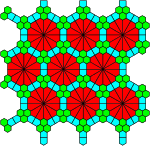
|
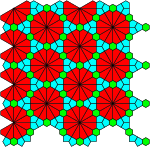
|

|

|
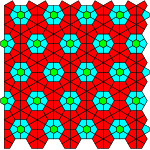
| |

|

|

|

|

|

|

|

|

|

| |

|

|

|

|

|

|

|

|

|

| |

|

|

|

|

|

|

|

|

|

| |

|

|

|

|

|

|

|

|

|

| |

|

|

|

|

|

|

|

|

|

| |

|

|

|

|
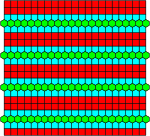
|
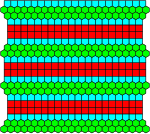
|
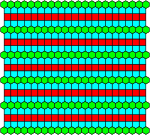
|

| |||

|

|

|

|

|

|

|

|

|

| |
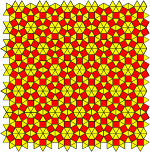
|

|

|

|

|
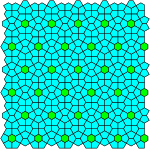
|

|

|

|

| |

|

|

|

|

|

|

|

|
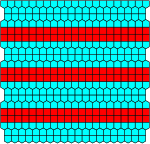
|

| |

|

|

|

|

|

|

|

|

|

| |

|

|

|

| |||||||

|

|

|

|

|

|

|

|

|
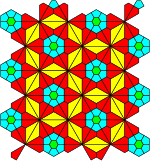
| |

|

|

|

|

|

|

|

|

|

| |

|

|

|

|

|

|

|

|

|

| |

|

|

|

|

|

|

|

|

|

| |

|

|

|

|

|

|

|

|

|

| |

|

|

|

|

|

|

|

|

|

| |

|

|

|

|

|

| |||||

|

|

|

|

|

|

|

|

|

| |

|

|

|

|

|

|

|

|

|

| |

|

|

|

|

|

|
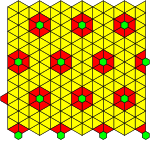
|

|

|
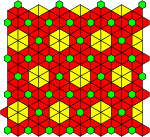
| |

|

|

|

|

|

|

|
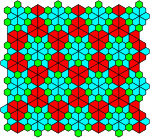
|

|

| |

|

|

|
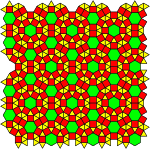
|

|

|

|

|

|

| |

|

|

|

|

|

|

|

|

|

| |

|

|

|

|

|

|

|

|

|

| |

|

|

|

|

|
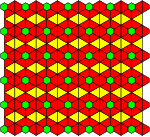
|

|

|

|

| |

|

|

|

|

|
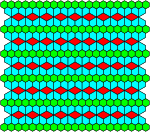
|

|

|

|

| |

|

|

|

|

|

|

|

|

|

| |

|

|

|

|

|

|

|

|

|

| |

|

|

|

|

|

|

|

|

|

| |

|

|

|

|

|

|

|

|

|

| |

|

|

|

|

|

|

|

|

|

| |

|

|

|

|

|

|

|

|

|

| |

|

|

|

|

|

|

|

|
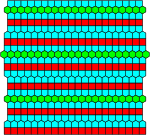
|

| |

|

|

|

|

|
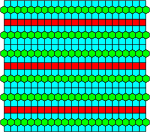
|

|

|

|

| |

|

|

|

|

|

|

|

|
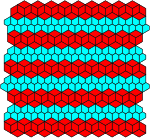
|

| |

|

|

|

|

|

|

|

|

|

| |

|

|
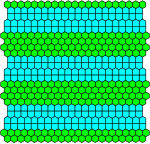
|

| |||||||

|

|

|

|

|

|

|

|

|

| |

|

|

|

|

|

|

|

|

|

| |

|

|

|

|

|

|

|

|
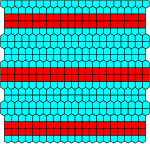
|

| |

|

|

|

|

|

|

|

|

|

| |

|

| |||||||||

|

|

|

|

|

|

|

|

|

| |

|

|

|

|

|

|

|

|

|

| |

|

|

|

|

|

|

|

|

|

| |

|

|

|

|

|

|

|

|

|

| |

|

|

|

|

|

|

|

|

|

| |

|

|

|

|

|

|

|

|

|

| |

|

|

|

|

|

|

|

|

|

| |

|

|

|

|

|

|

|

|

|

| |

|

|

|

|

|

|

|

|

|

| |

|

|

|

|

|

|

|
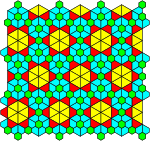
|

|

| |

|

|

|

|

|

|

|

|

|

| |

|

|

|

|

|

|

|

|

|
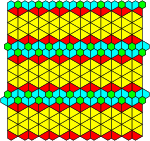
| |

|

|

|

|

|

|

|

|

|

| |

|

|

|

|

|

|
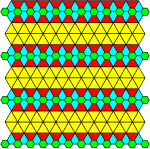
|

|
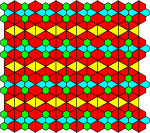
|

| |

|

|

|

|

|

|

|

|

|

| |

|

|

|

|

|

|

|

|

|

| |

|

|

|

|

|

|

|

|

|

| |

|

|

|

|

|

|

|

|

|

| |

|

|

|

|

|

|

|

|

|

| |

|

|

|

|

|

|

|

|

|

| |

|

|

|

|

|

|

|

|

|

| |

|

|

|

|

|

|

|

| |||

|

|

|

|

|

|

|

|

|

| |

|

|

|

|

|

|

|

|

|

| |

|

|

|

|

|

|

|

|
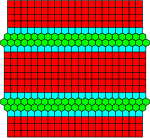
|

| |

|

|

|

|

|

|
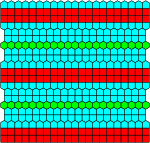
|
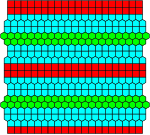
|

|

| |

|

|

|

|

|

|

|

|

|

| |

|

|

|

|

|

|

|

|

|

| |

|

|

|

|

|

|

|

|

|

| |

|

|

|

|

|

|

|
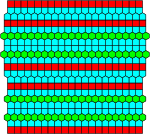
|

|
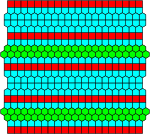
| |

|

|

|

|

|

|

|

|
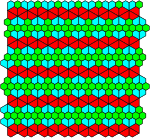
|

| |

|

|

|

|

|
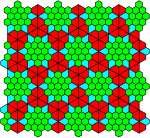
|

|

|

|

| |

|

|

|

|

|

|

|

|

|

| |

|

|

|

|

|

|

|

|

|

| |

|

|

|

|

|

|

|

|

|

| |

|

|

|

|

|

|

|

|
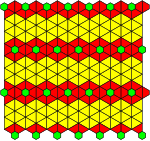
|

| |

|

|

|

|

|

|

|

|

|

| |

|

|

|

|

|

|

|

|

|

| |

|

|

|

|

|

|

|

|

|

| |

|

|

|

|

|

|

|

|

|

| |

|

|

|

|

|

|

|

|

|

| |

|

|

|

|

|

|

|

|
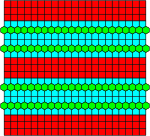
|

| |

|

|

|

|

|

|

|

|

|

| |

|

|

|

|

|
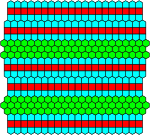
|
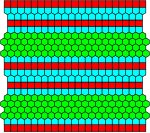
|

|

|

| |

|

|

|

|

|

|

|

|

|

| |

|

|

|

|

|

|

|

|

|

| |

|

|

|

|

|

|

|

|

|

| |

|

|

|

|

|

|

|
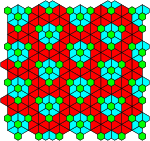
|

|

| |

|

|

|

|

|
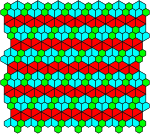
|

|

|

|

| |

|

|

|

|

|

|

|

|

|

| |

|

|

|

|

|

|

|

|

|

| |

|

|

|

|

|

|

|

| |||

|

|

|

|

|

|

|

|

|

| |

|

|

|

|

|

|

|

|

|

| |

|

|

|

|

|

|

|

|

|

| |

|

|

|

| |||||||

|

|

|

|

|

|
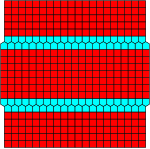
|
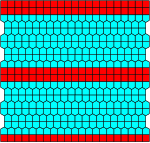
|
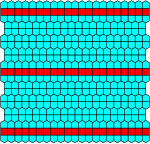
|

| |

|

|

|

|

|
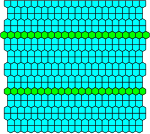
|

|
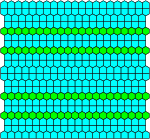
|

|

| |

|

|

|

|

|

|

|

|

|

| |

|

|

|

|

|

|
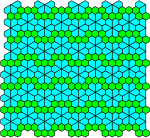
|

|
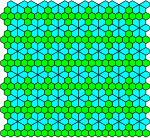
|
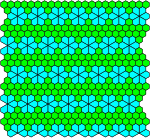
| |

|

|

|

|

|

|

|

| |||

|

|

|

|

|
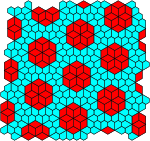
|
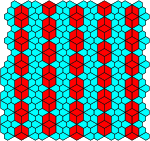
|

| |||

|

|

|

|

|

|

|

|

|

| |

|

|

|

|

|

|

|

| |||

|

|

|

|

|
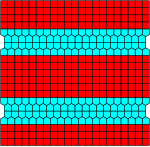
|

|

|

|

| |

|

|

|

|

|

|

|

|

|
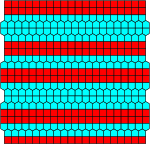
| |

|

|

|

|

|

|

|

|

|

| |

|

|

|

|

|

|

|

|

|

| |
References
[edit]- ^ a b "THE BIG LIST SYSTEM OF TILINGS OF REGULAR POLYGONS". THE BIG LIST SYSTEM OF TILINGS OF REGULAR POLYGONS. Retrieved 2019-10-27.
- Grunbaum, Branko; Shephard, Geoffrey C. (1977). "Tilings by regular polygons". Math. Mag. 50 (5): 227–247. doi:10.2307/2689529. JSTOR 2689529.
- Grünbaum, Branko; Shephard, G. C. (1978). "The ninety-one types of isogonal tilings in the plane". Trans. Am. Math. Soc. 252: 335–353. doi:10.1090/S0002-9947-1978-0496813-3. MR 0496813.
{{cite journal}}: CS1 maint: multiple names: authors list (link) - Debroey, I.; Landuyt, F. (1981). "Equitransitive edge-to-edge tilings". Geometriae Dedicata. 11 (1): 47–60. doi:10.1007/BF00183189.
- Grünbaum, Branko; Shephard, G. C. (1987). Tilings and Patterns. W. H. Freeman and Company. ISBN 0-7167-1193-1.
{{cite book}}: CS1 maint: multiple names: authors list (link) - Ren, Ding; Reay, John R. (1987). "The boundary characteristic and Pick's theorem in the Archimedean planar tilings". J. Combinat. Theory A. 44 (1): 110–119. doi:10.1016/0097-3165(87)90063-X.
- Chavey, D. (1989). "Tilings by Regular Polygons—II: A Catalog of Tilings". Computers & Mathematics with Applications. 17: 147–165. doi:10.1016/0898-1221(89)90156-9.
- Order in Space: A design source book, Keith Critchlow, 1970 ISBN 978-0-670-52830-1
- Sommerville, Duncan MacLaren Young (1958). An Introduction to the Geometry of n Dimensions. Dover Publications. Chapter X: The Regular Polytopes
- Préa, P. (1997). "Distance sequences and percolation thresholds in Archimedean Tilings". Mathl. Comput. Modelling. 26 (8–10): 317–320. doi:10.1016/S0895-7177(97)00216-1.
{{cite journal}}: CS1 maint: multiple names: authors list (link) - Kovic, Jurij (2011). "Symmetry-type graphs of Platonic and Archimedean solids". Math. Commun. 16 (2): 491–507.
- Pellicer, Daniel; Williams, Gordon (2012). "Minimal covers of the Archimedean Tilings". El. J. Combinat. 19 (3): #P6. doi:10.37236/2512.
External links
[edit]- n-uniform tilings Brian Galebach
- Dutch, Steve. "Uniform Tilings". Retrieved 2006-09-09.
- Weisstein, Eric W. "Tessellation". MathWorld.
- Weisstein, Eric W. "Semiregular tessellation". MathWorld.
- Weisstein, Eric W. "Demiregular tessellation". MathWorld.






